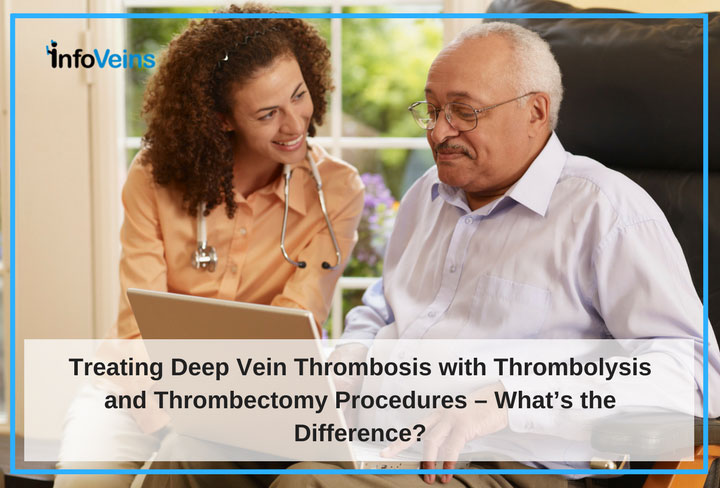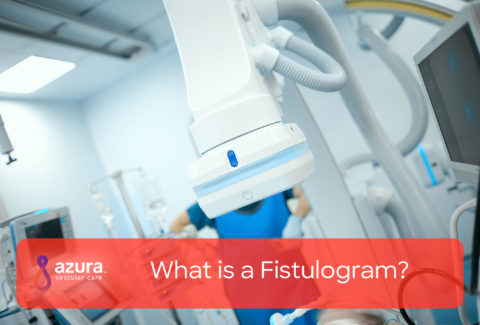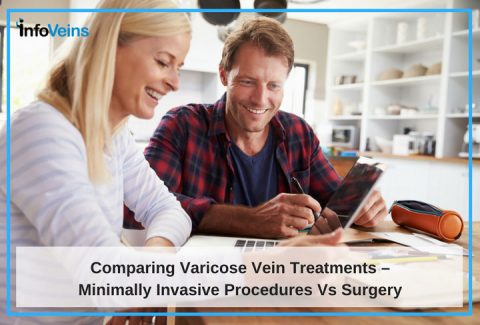
“Were you recently diagnosed with deep vein thrombosis?”
“Have you ever wondered if taking blood thinners is the only treatment option?”
“Could you be doing more?”
Maybe your doctor has already prescribed blood thinners to treat your Deep Vein Thrombosis… but you should know, there are other treatment options besides blood thinners you may want to consider.
Medication, IVC Filters, Thrombolysis and Thrombectomy Procedures
Blood clots form naturally all the time, but when a blood clot forms in a deep vein, it’s abnormal. Deep vein thrombosis usually occurs in the arms and legs.i While it can cause leg pain and swelling, the most dangerous complication of deep vein thrombosis is a pulmonary embolism. This happens when the blood clot travels to the pulmonary arteries in the lungs, this can be life threatening because when this occurs, the flow of blood to the lungs is blocked.
So how do you know if you have deep vein thrombosis?
If you have any of the following symptoms, or if you suspect that you have a blood clot, see your doctor right away. Some common symptoms of deep vein thrombosis may include:
- Swelling or redness in an arm or leg
- An arm or leg that hurts when touched
- Shortness of breath that came on out of the blue
- Chest pain or discomfort that’s worse when taking a deep breath or coughing
- Passing out or feeling lightheaded
- Racing heart
- Coughing up bloodii
Medications for Deep Vein Thrombosis
Blood thinners, or anticoagulants, are the standard medical treatment for blood clots. Some people may be started on an injectable form of anticoagulant and go home, but in some cases a hospital admission may be required in order to receive intravenous anticoagulation.
Most people will be transitioned to pill forms of blood thinners and continue on this course for at least 3 months.ii Blood thinners do not actually break up the clot. Rather, they thin the blood to prevent more clots from forming. Over time, your body should reabsorb the blood clot naturally.
Occasionally, a clot may be very large or in a dangerous position. In some cases, if the clot is not dissolved right away, there’s the potential of losing a limb or even of death. In this case, a medication that breaks the clot, a thrombolytic, is given through an intravenous line. Because this can cause serious bleeding, this treatment is only used in life threatening situations.ii
Other Treatment Options
While anticoagulation is considered the “standard of care” by many doctors, there are times when this alone is not enough. In that case, there are other options that can be used. Some treatments are used as they emerge, and others are used after you have been on anticoagulation therapy for a period of time.
IVC Filters
If you’re unable to take a blood thinner, or if it’s not safe for you, your doctor may recommend that you have a special filter placed in your inferior vena cava (IVC). A vascular specialist can place this filter, by entering your vein through a small nick in the skin and placing the filter in the large vein in your abdomen. The filter allows blood to pass through, but it will block any clots from going to your lungs.iii Keep in mind this course of treatment does nothing to treat any existing clots – it only prevents pulmonary embolism.
The Thrombectomy Procedure
If a blood clot is threatening a patient’s life or a part of their body, a surgeon or vascular specialist can remove the clot. Thrombectomy is a catheter-based procedure and involves gaining access to the vein through a small incision, and then the clot is removed by using a special medical instrument.ii
Thrombolysis Procedure
Vascular specialists use catheter-directed thrombolysis to dissolve blood clots. A catheter is placed through a small nick in the skin into the vein and then guided to the location of the clot with the use of x-rays. Once at the clot, a thrombolytic medication or a small tool is used to break up the clot.iv
Post-Thrombotic Syndrome
Because traditional treatment of deep vein thrombosis requires your own body to dissolve the clot, it’s not uncommon for patients to continue having pain and swelling for several months. Thrombolysis can be an effective treatment for a condition called post-thrombotic syndrome. If you have persistent pain and swelling caused by deep vein thrombosis 7 days after you started on blood thinners, catheter-directed thrombolysis can help restore the blood flow and take the pressure off of your veins, offering relief.v
Curious about these other options? If you’re interested in seeing if you could be doing more to treat your deep vein thrombosis symptoms, and it has been at least 7 days since you started treatment, make an appointment with an interventional radiologist to review your symptoms, your imaging, your past medical history and your medications to see what options may be available to you.
Sources:
i Centers for Disease Control and Prevention, Venous Thromboembolism (Blood Clots). https://www.cdc.gov/ncbddd/dvt/facts.html (reviewed 2/24/2016, accessed 12/16/2016)
ii Mayo Clinic, Deep venous thrombosis (DVT). http://www.mayoclinic.org/diseases-conditions/deep-vein-thrombosis/basics/definition/con-20031922?p=1 (reviewed 7/3/2014, accessed 12/16/2016)
iii RadiologyInfo.org, Blood clots. http://www.radiologyinfo.org/en/info.cfm?pg=bloodclot (reviewed 4/11/2016, accessed 12/16/2016)
iv RadiologyInfo.org, Blood clots. http://www.radiologyinfo.org/en/info.cfm?pg=bloodclot (reviewed 4/11/2016, accessed 12/16/2016)
v Society of Interventional Radiology, Deep Vein Thrombosis Overview. http://www.sirweb.org/patients/deep-vein-thrombosis/ (accessed 12/16/2016)


